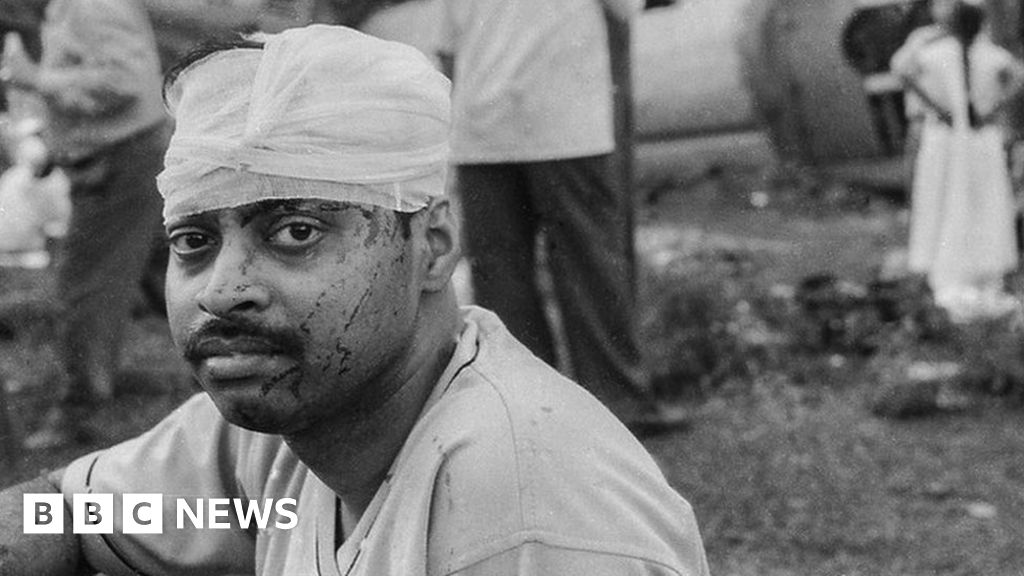The Burlingame train crash has become a focal point of discussion in recent years, as it sheds light on critical safety issues within the transportation sector. This tragic incident not only highlights the vulnerabilities in railway systems but also underscores the importance of implementing advanced safety measures. Understanding the root causes and implications of this disaster is essential for ensuring safer travel for millions of passengers.
Railway accidents are rare but devastating events that can have far-reaching consequences. The Burlingame train crash is one such example, where human error, technical failures, and systemic issues converged to create a tragedy. This article delves into the details of the incident, exploring the factors that contributed to the crash and the lessons learned.
As we examine the Burlingame train crash, it becomes evident that the event serves as a wake-up call for transportation authorities and policymakers. By analyzing the data and drawing insights from expert opinions, we aim to provide a comprehensive understanding of the incident and its implications for the future of railway safety.
Read also:Obituaries Dafford Funeral Home Dunn Nc Honoring Lives And Legacy
Table of Contents
- Introduction to Burlingame Train Crash
- A Brief History of Railway Accidents
- Details of the Burlingame Train Crash
- Causes of the Train Crash
- Impact on Local Communities
- Investigation and Findings
- Safety Measures Implemented After the Crash
- Lessons Learned from the Burlingame Incident
- Future of Railway Safety
- Conclusion and Call to Action
Introduction to Burlingame Train Crash
The Burlingame train crash occurred on a fateful day, leaving a lasting impact on the community and the railway industry as a whole. This incident has been extensively studied to identify the underlying causes and to prevent similar accidents in the future. Understanding the context and significance of this event is crucial for ensuring the safety of passengers and enhancing railway infrastructure.
This section provides an overview of the crash, including the timeline of events and the immediate aftermath. By examining the initial reports and witness accounts, we can gain valuable insights into the circumstances surrounding the accident.
A Brief History of Railway Accidents
Railway accidents have been a part of transportation history since the advent of trains. While advancements in technology and safety protocols have significantly reduced the frequency of such incidents, they remain a concern for authorities worldwide. The Burlingame train crash is one of the more recent examples of such accidents, highlighting the ongoing challenges in ensuring railway safety.
Historically, railway accidents have resulted from a combination of factors, including human error, mechanical failures, and environmental conditions. By studying past incidents, experts can identify patterns and develop strategies to mitigate risks in the future.
Details of the Burlingame Train Crash
The Burlingame train crash took place on [specific date], involving a passenger train traveling from [origin] to [destination]. The train derailed near Burlingame, California, resulting in [number] fatalities and [number] injuries. The incident occurred during peak travel hours, increasing the number of affected passengers.
Witnesses described the scene as chaotic, with emergency responders working tirelessly to rescue trapped passengers. The local community rallied to support the victims and their families, demonstrating resilience in the face of tragedy.
Read also:Comprehensive Guide To Evansville Press Obits Your Trusted Source For Local Obituaries
Causes of the Train Crash
Human Error
One of the primary factors contributing to the Burlingame train crash was human error. Investigations revealed that the train operator failed to adhere to safety protocols, leading to a series of misjudgments. Factors such as fatigue, inadequate training, and distractions were identified as potential contributors to the operator's mistakes.
Technical Failures
In addition to human error, technical failures played a significant role in the accident. The train's braking system malfunctioned, preventing it from slowing down in time to avoid the derailment. Experts pointed out that regular maintenance and inspections could have identified and addressed these issues before they escalated into a disaster.
Impact on Local Communities
The Burlingame train crash had a profound impact on the local community, affecting not only the victims and their families but also the broader population. The accident disrupted daily commutes and caused significant economic losses for businesses reliant on railway transportation. Moreover, the emotional toll on the community was evident in the outpouring of support and solidarity during the recovery process.
Local authorities and organizations worked together to provide assistance to those affected by the crash. Counseling services, financial aid, and community events were organized to help individuals cope with the aftermath of the tragedy.
Investigation and Findings
An in-depth investigation was conducted following the Burlingame train crash, involving multiple agencies and experts in the field. The National Transportation Safety Board (NTSB) played a pivotal role in analyzing the data and determining the root causes of the accident. Their findings revealed a combination of human and technical factors that contributed to the disaster.
The investigation also highlighted systemic issues within the railway industry, prompting calls for reform and improved safety standards. Recommendations were made to enhance training programs for train operators, upgrade infrastructure, and implement advanced monitoring systems.
Safety Measures Implemented After the Crash
In response to the Burlingame train crash, several safety measures were implemented to prevent similar incidents in the future. Rail companies invested in new technologies, such as Positive Train Control (PTC), which uses GPS and wireless communication to monitor train movements and prevent derailments. Additionally, stricter regulations were introduced to ensure compliance with safety protocols.
Training programs for railway personnel were revamped to emphasize the importance of vigilance and adherence to procedures. Regular maintenance schedules were established to identify and address potential issues before they compromise safety.
Lessons Learned from the Burlingame Incident
The Burlingame train crash serves as a poignant reminder of the importance of prioritizing safety in the transportation sector. Lessons learned from this incident include the need for continuous improvement in technology, training, and infrastructure. By addressing these areas, railway systems can become more reliable and secure for passengers.
Furthermore, the incident underscores the significance of fostering a culture of accountability and transparency within the industry. Encouraging open communication and collaboration among stakeholders can lead to the development of innovative solutions to safety challenges.
Future of Railway Safety
As the railway industry continues to evolve, the focus on safety remains paramount. Emerging technologies, such as artificial intelligence and machine learning, offer promising opportunities to enhance monitoring and predictive capabilities. These advancements can help identify potential risks and enable proactive measures to prevent accidents.
Global cooperation and knowledge sharing are essential for advancing railway safety standards. By learning from incidents like the Burlingame train crash and implementing best practices, the industry can move toward a future where such tragedies are minimized.
Conclusion and Call to Action
In conclusion, the Burlingame train crash was a tragic event that exposed vulnerabilities in the railway system. Through thorough investigations and analyses, valuable lessons have been learned, leading to improvements in safety measures and protocols. Ensuring the safety of passengers is a shared responsibility that requires collaboration between rail companies, regulators, and the public.
We invite readers to engage in discussions about railway safety and share their thoughts in the comments section. Additionally, consider exploring other articles on our website for more insights into transportation and safety topics. Together, we can contribute to a safer and more reliable transportation network for everyone.
References:
- National Transportation Safety Board (NTSB) Reports
- U.S. Department of Transportation Publications
- Industry Expert Opinions and Studies


